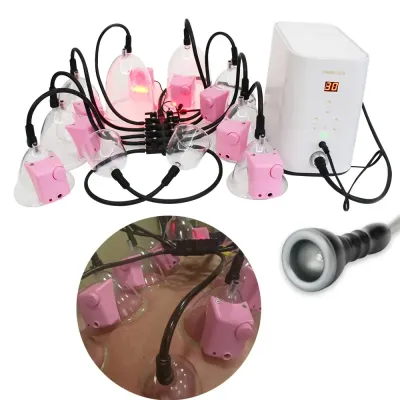
What is the difference between cavitation and ultrasonic cavitation?
2025-05-22 15:30
In the field of beauty and medical technology, ultrasonic cavitation is an increasingly popular concept, especially in non-invasive body shaping and fat reduction technology. However, many people are not clear about the difference between "cavitation" and "ultrasonic cavitation", and even confuse the two concepts. In fact, the two are fundamentally different in terms of definition, principle, scope of application, etc.
This article will analyze this topic in detail to help everyone understand the role of ultrasonic fat cavitation machine more scientifically and professionally.
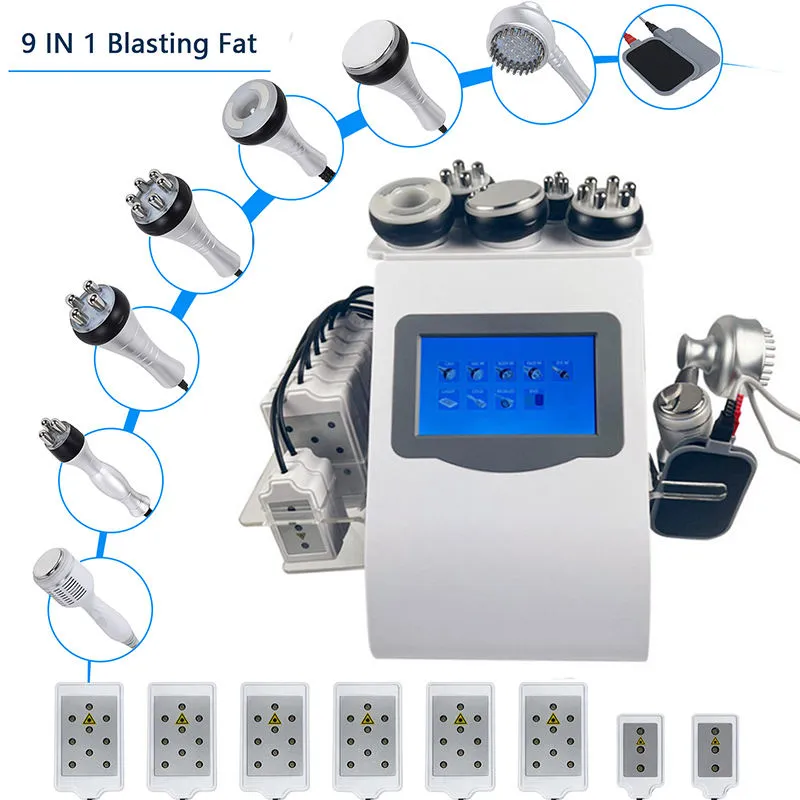
What is cavitation?
Cavitation refers to the physical phenomenon that bubbles in liquids form, grow and eventually burst due to pressure changes. This process is very common in fluid dynamics, mechanical engineering and nature, for example:
● Bubble burst in water: Bubbles formed in high-speed water flow burst after the pressure drops, generating a violent impact force.
● Ship propeller cavitation: When the propeller rotates at high speed in the water, the pressure changes around the blades may cause water vapor bubbles to form and burst, thus affecting the performance of the propeller.
● Medical and industrial applications: Cavitation is used in some medical ultrasound, liquid stirring and cleaning equipment to enhance the effect.
Basic process of cavitation
Cavitation is usually caused by pressure changes. When the local pressure of the liquid drops below the liquid evaporation pressure, the liquid will quickly vaporize to form small bubbles. These bubbles will quickly collapse (break) when the pressure is restored, releasing a large amount of energy and may produce tiny shock waves. The intensity of these shock waves depends on the size of the bubbles and the way they break, and in some cases, they may have a significant impact on the surrounding environment.
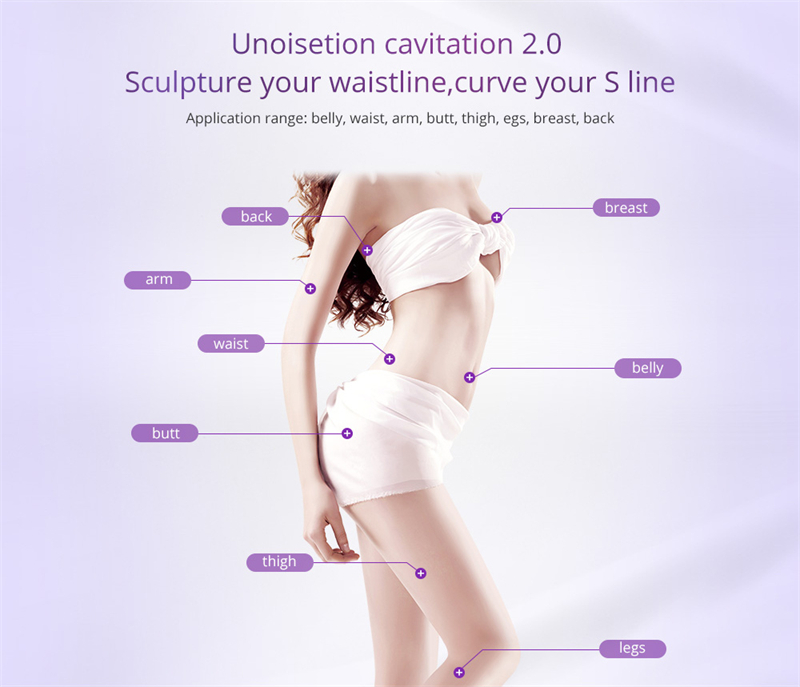
What is ultrasonic cavitation?
Ultrasonic cavitation is based on the traditional cavitation phenomenon. It uses ultrasonic technology to control and utilize the cavitation effect, so that it can be applied to many fields such as medicine, beauty and industry. Ultrasonic fat cavitation machine uses this principle to become a non-invasive fat reduction technology.
Working principle of ultrasonic fat cavitation machine
Ultrasonic fat cavitation machine uses low-frequency ultrasound (usually 30-40kHz) to act on the subcutaneous fat layer, so that the liquid in the fat cells is strongly cavitated. The specific process is as follows:
1. Ultrasonic waves are transmitted to subcutaneous tissue: Ultrasonic waves are transmitted to the fat tissue under the skin through the probe, generating high-frequency vibrations.
2. Microbubble formation: Due to the effect of ultrasonic energy, the liquid in the fat cells and the surrounding tissues form tiny bubbles. These bubbles continue to expand and contract under high pressure.
3. Bubble rupture leads to fat decomposition: When the bubbles reach a certain size, the pressure rises sharply, causing the bubbles to rupture and release shock waves. This shock wave can destroy the fat cell membrane and release the glycerol and free fatty acids in the fat cells into the lymphatic system.
4. Fat metabolism and excretion: The released fatty acids and glycerol will be excreted through the lymphatic system and urine, ultimately achieving the effect of fat reduction.
Key features of ultrasonic fat cavitation machine
● Non-invasive: Unlike liposuction surgery, ultrasonic fat cavitation machine does not damage the skin or tissue.
● No recovery period: Normal activities can be resumed immediately after treatment without special care.
● Targeting local fat: Especially suitable for local fat accumulation areas such as the abdomen, thighs, and arms.
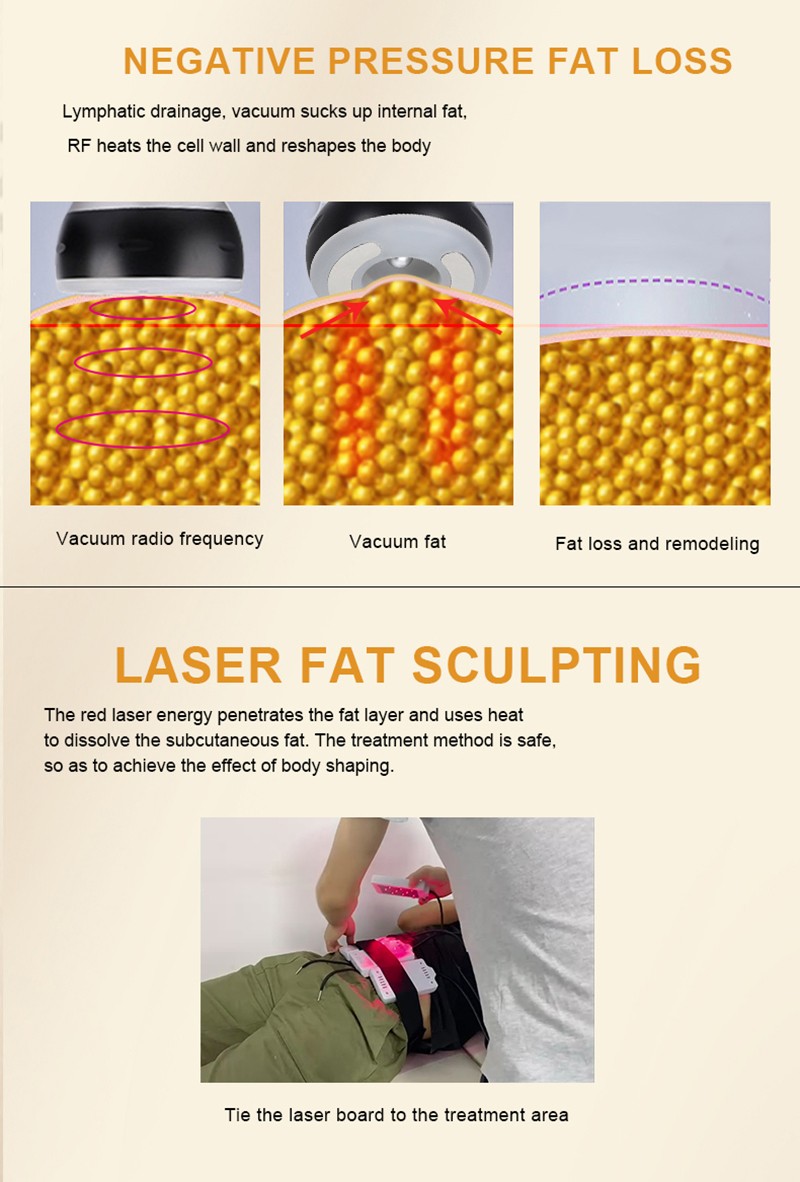
What is the main difference between cavitation and ultrasonic cavitation?
| Comparison item | Cavitation | Ultrasonic Cavitation |
| Definition | The physical phenomenon of bubbles being generated and bursting under pressure changes in fluid | Ultrasonic cavitation uses low-frequency ultrasound to generate bubbles and break them up to break down fat cells |
| Generation method | It is formed naturally by changes in fluid pressure, such as high-speed water flow, propeller operation, etc | Ultrasonic devices actively generate bubbles for specific treatments or cleaning |
| Application area | Ship propulsion, mechanical engineering, fluid mechanics, etc | Medical beauty (such as ultrasonic fat cavitation machine), ultrasonic cleaning, etc |
| Affect range | It may cause erosion or damage to surrounding objects | It acts on specific parts and is non-invasive to the human body |
| Mechanism of action | The bursting of bubbles generates impact force, which may damage the surface of the material | Bubbles burst and release energy to help break down fat cells |
As can be seen from the table above, although ultrasonic cavitation is essentially still a type of cavitation phenomenon, it is controlled and utilized through ultrasonic technology and applied to human beauty and medicine, while ordinary cavitation is widely present in the physical environment and is often uncontrolled.
Comparison between ultrasonic fat cavitation machine and other weight loss technologies
There are many different fat reduction technologies on the market. Compared with other technologies, ultrasonic fat cavitation machine has the following differences:
| Type of technology | Mode of action | Is it invasive? | Applicable groups |
| Ultrasonic fat cavitation machine | Low-frequency ultrasound vibrates fat cells and destroys cell membranes | Non-invasive | People with mild to moderate fat accumulation |
| Freezing fat | Low temperature acts on the fat layer, causing fat cells to apoptosis | Non-invasive | People with mild to moderate fat accumulation |
| Radiofrequency lipolysis | Radio frequency heats the fat layer and increases metabolism | Non-invasive | People with loose skin and less fat |
| Liposuction | Absorbs fat cells through negative pressure | Invasive | People who need to lose a lot of fat |
From the comparison, ultrasonic fat cavitation machine is more suitable for people who want to reduce local fat but do not want to undergo surgery.
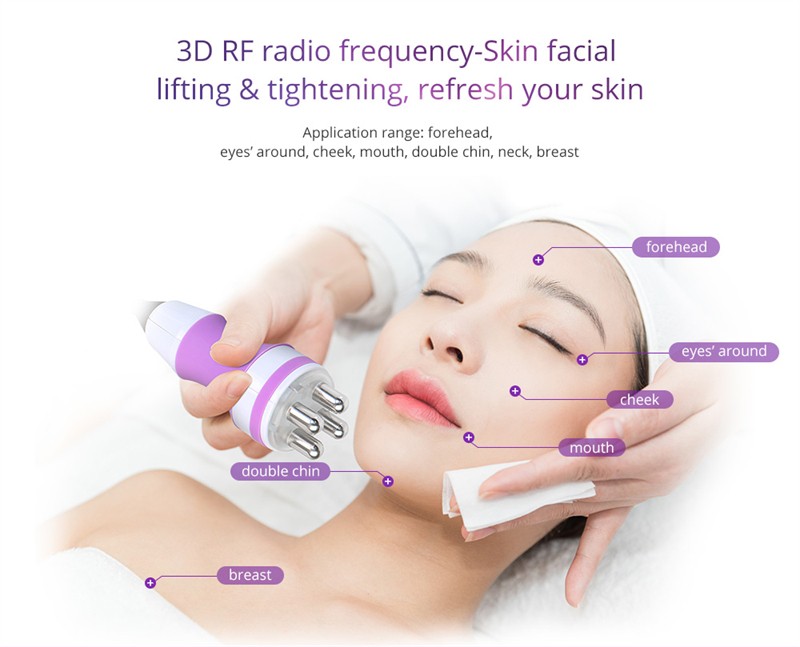
The core difference between cavitation and ultrasonic cavitation
Cavitation is a physical phenomenon that is widely present in fields such as fluid dynamics and mechanical engineering; while ultrasonic cavitation is a controlled technology used in the fields of medicine and beauty, especially fat reduction and body shaping.
The ultrasonic fat cavitation machine uses low-frequency ultrasound to form and rupture microbubbles in fat cells, helping to decompose fat cells and metabolize them out of the body.
Ultrasonic fat cavitation machine is a non-invasive and non-invasive technology. Compared with other methods such as liposuction and cryolipolysis, it is safer and suitable for local body shaping.
In summary, although cavitation and ultrasonic cavitation are related to each other, their concepts, applications and mechanisms of action are essentially different. Correctly understanding their differences will help to better choose the appropriate fat reduction technology.
Beauty Equipment Manufacturer - Low-Cost Wholesale Pricing
Looking for high-quality beauty equipment at factory prices? KuoHai is a professional supplier in China, specializing in personal beauty and home care devices. Our wholesale product range includes laser beauty machines, cryolipolysis slimming devices, electric facial cleansers, and massage equipment. We offer bulk discounts, private-label solutions, and promotional pricing. Contact us now for factory quotes and supplier deals.
Get the latest price? We'll respond as soon as possible(within 12 hours)

